Binance and KuCoin are global cryptocurrency exchanges, offering a wide range of services for both beginners and experienced traders. These platforms support hundreds of digital assets and are known for their low trading fees, advanced trading tools, diverse earning features, crypto loans, and extensive products for institutional traders.
Given their similarities, we will compare Binance vs KuCoin based on several key features, including automated trading bots, web3 wallets, earning opportunities, security, and their respective token launch platforms (Binance Launchpad & Launchpool and KuCoin LaunchHub).
In addition, we’ll look at their transaction fees, available cryptocurrencies, pros and cons, and supported payment methods. And by the end of this Binance vs KuCoin review, you’ll be able to determine which of the two cryptocurrency exchanges is best for you.
Binance vs. KuCoin: An Overview Comparison
The key differences between Binance and KuCoin are their key features, security and regulatory level, user base, liquidity, KYC requirements, and institutional products. Binance is suitable for a wide range of users, including complete beginners, advanced traders, and institutional traders, due to its robust liquidity, regulatory footprint in various countries, and comprehensive product offerings.
On the other hand, KuCoin is known for its deep selection of altcoins and access to early-stage or low-cap tokens that may not be available on larger exchanges like Binance. It also offers features like trading bots, KuCoin lending, a launch platform, and community-based programs such as “KuCoin Earn” and GemVote.
That said, the table below compares Binance and KuCoin to help you decide which might be best for you at a glance.
| Exchange | Binance | KuCoin |
| Best For | Experienced traders who need deep liquidity, advanced tools, and low fees. | Experienced traders who want access to new and not-yet-mainstream coins. |
| Founded | 2017 | 2017 |
| Founder | Changpeng Zhao | Michael Gan |
| Headquarters | Malta | Mahé, Seychelles |
| Supported Cryptocurrencies | 430+ | 750+ |
| Key Features | Trading bots, web3 wallet, earn, Binance NFT, and Binance Launchpad & Launchpool. | Trading bots, web3 wallet, LaunchHub, KuCoin Earn, and KuCard. |
| Trading Fees | 0.1% makers/takers for spot trading) and 0.02% / 0.05% maker and taker fees, respectively. | 0.1% makers/takers for spot and 0.02% / 0.05% maker and taker fees, respectively. |
| Web3 Wallet | Yes | Yes |
| NFT Marketplace | Yes | Yes |
| Trading Bot | Yes | Yes |
| Security | SAFU, two-factor authentication (2FA), withdrawal address whitelisting, cold storage of crypto, multi-signature wallets, and a bug bounty program. | Cold storage, Two-Factor Authentication, anti-phishing codes, and an insurance fund. |
| KYC Requirements | Mandatory | Mandatory (Basic KYC) |
| P2P Trading | Yes | Yes |
| Accepted Payment Methods | Crypto, bank deposits, debit/credit cards, Apple Pay, Google Pay, and third-party payment processors. | Crypto, bank transfer, credit cards, and SEPA bank transfers. |
| Trading Volume (Subject to Market Changes) | $217 billion | $1.2 billion |
| Available in the US | No | No |
Register a new Binance account and receive a $100 welcome bonus and a 10% additional fee discount
What Is Binance Crypto Exchange?
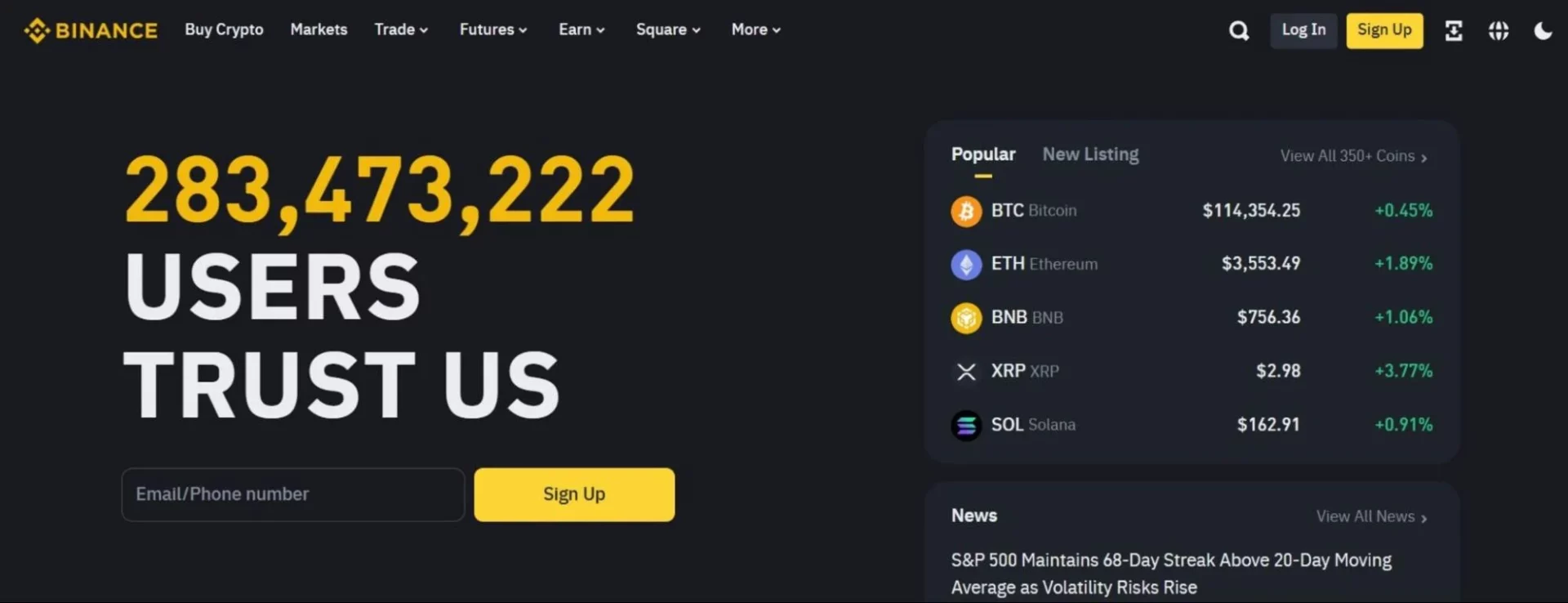
Binance is the largest cryptocurrency exchange by trading volume and one of the most popular platforms for buying, selling, and trading cryptocurrencies. The exchange platform has an in-app web3 portal, a robust DeFi ecosystem, and advanced trading features such as spot trading, margin, futures trading, staking, and liquidity farming.
Binance crypto exchange is popular for low trading fees with a discount for BNB holders, high liquidity, support for a wide range of cryptocurrencies, and extensive products and services. Although the exchange faces regulatory restrictions in some countries, including the United States, Binance has a separate platform for customers in the U.S called Binance U.S to comply with local regulations.
What Is KuCoin Crypto Exchange?
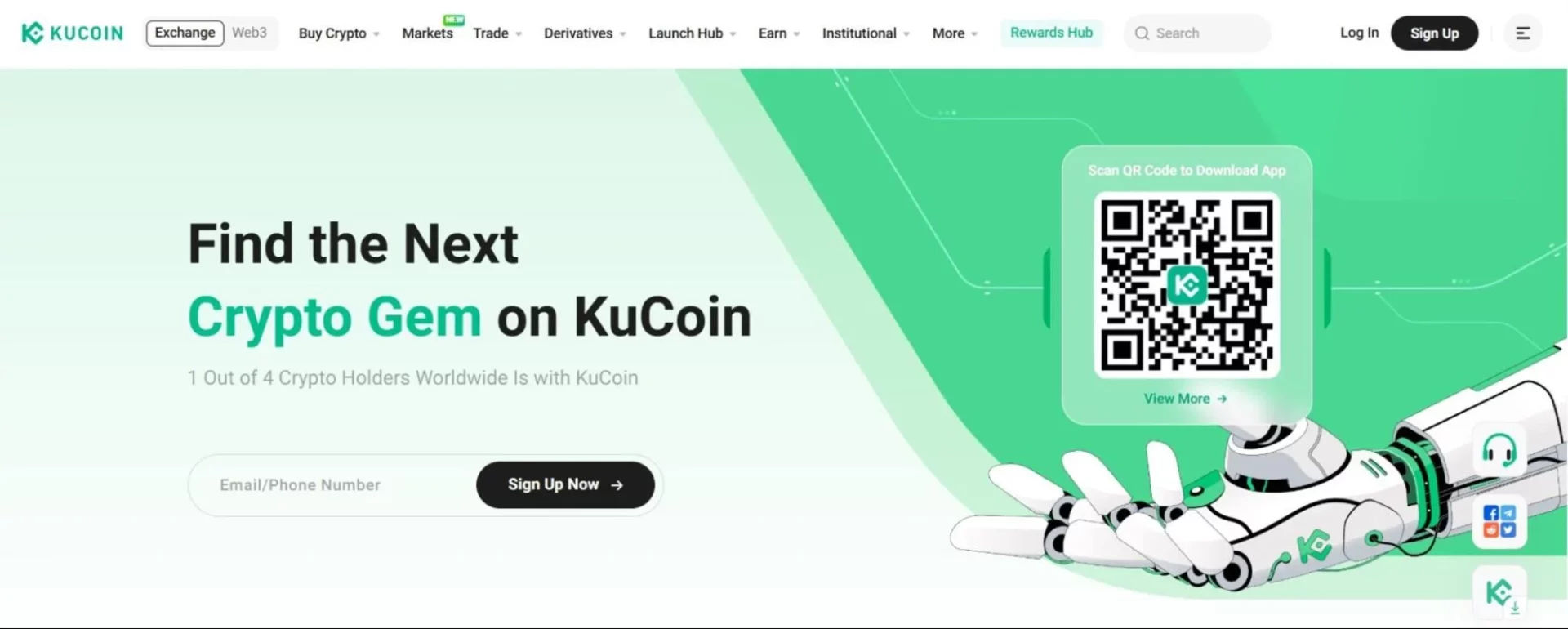
KuCoin is a global cryptocurrency exchange that offers a comprehensive set of trading options, such as spot trading, margin trading, futures trading, options trading, and peer-to-peer (P2P) fiat trading. The trading platform is often referred to as the “People’s Exchange” due to its user-friendly approach and support for a vast selection of altcoins, including listing new crypto assets before they are available on other exchanges.
KuCoin is suitable for both beginners and advanced traders as it offers low transaction fees with discounts for KCS holders, advanced automated trading bots, a web3 wallet, and extensive staking services that allow users to earn rewards from their crypto holdings. Like Binance, KuCoin supports a broad geographic user base across more than 200 countries, but does not offer its services to traders in the US due to regulatory reasons.
What Are The Fees of Binance vs KuCoin?
The fees of Binance and KuCoin include crypto trading fees, deposit and withdrawal fees, staking fees, and futures fees.
Binance vs KuCoin: Trading Fees
Binance and KuCoin have a tiered fee structure that applies to spot and margin trading pairs. Both Binance and KuCoin offer discounts for traders holding their native tokens, BNB for Binance and KCS for KuCoin Exchange. Here is a rundown of the fees spot traders should expect to pay on both exchanges:
- Binance Spot and Margin Trading Fees (Standard)
Binance spot and margin fees are 0.10% for both makers and takers. Traders holding or using Binance Coin (BNB) to pay transaction fees receive a 25% discount, reducing the fee to 0.075%. Traders with higher 30-day trading volume qualify for an additional discount on fees.
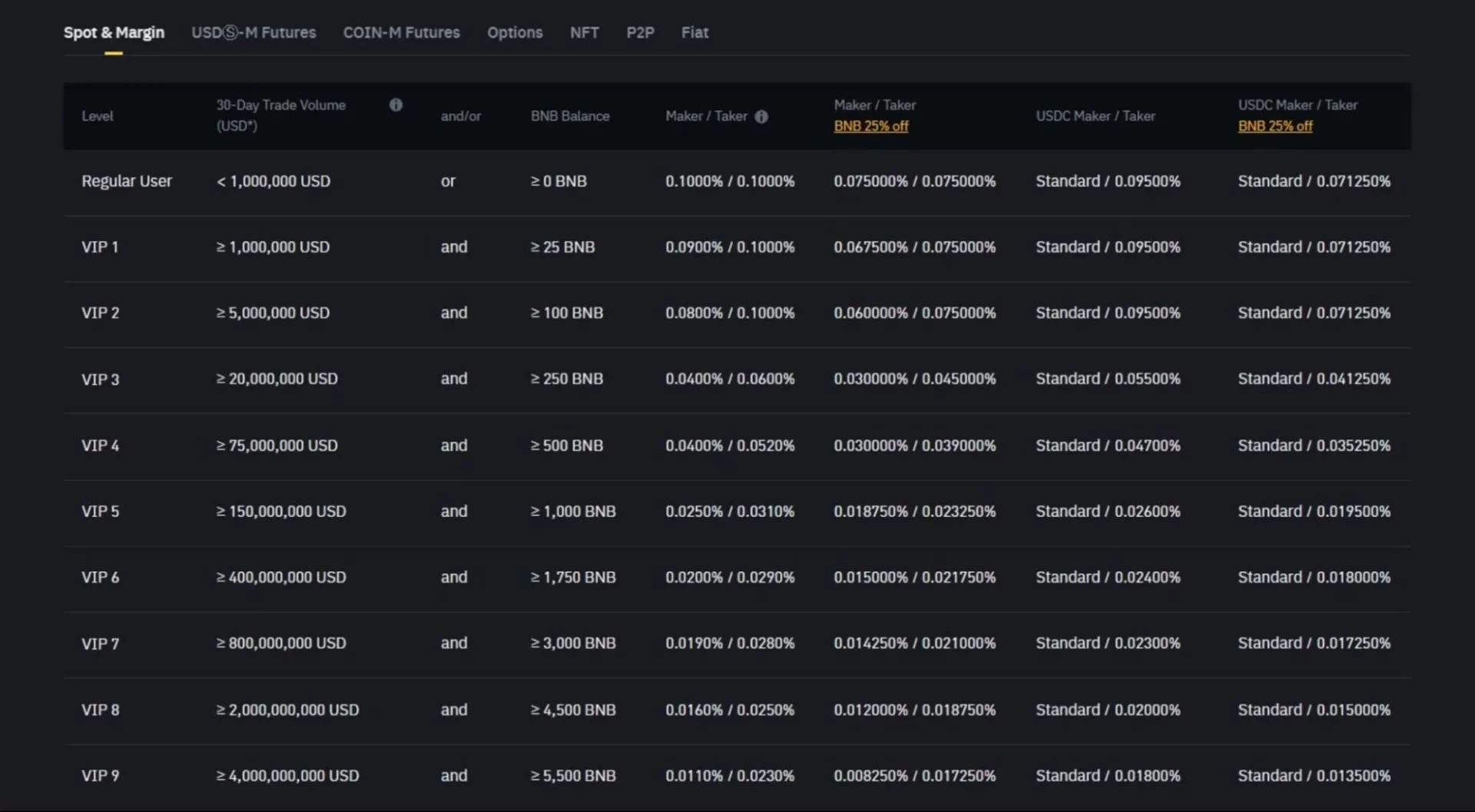
- KuCoin Spot Trading Fees (Standard)
KuCoin charges a base fee of 0.10% for both makers and takers on spot and margin trades. KuCoin native token (KCS) holders receive a 20% discount, lowering the fee to 0.08%. The exchange platform also offers a tiered VIP system, based on 30-day trading volume and KCS holdings, which reduces costs to as low as 0.005% for makers and 0.020% for taker fees.
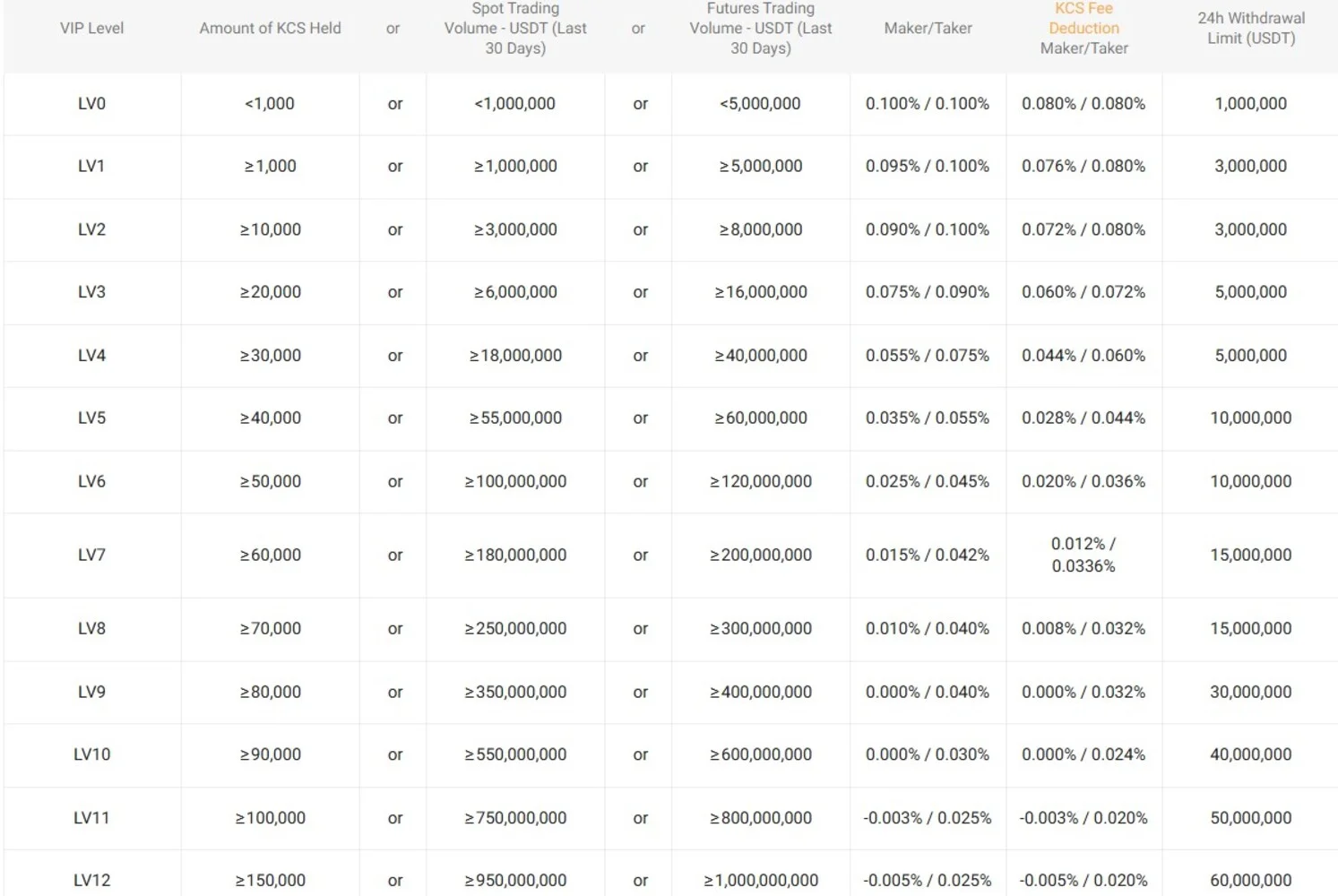
Open a new account on KuCoin and receive a 100 USDT welcome bonus to kickstart your trading journey.
KuCoin vs Binance: Deposit and Withdrawal Fees
KuCoin and Binance deposit and withdrawal fees for crypto and fiat transactions are highlighted below
KuCoin Deposit Fees
- Cryptocurrency Deposits: KuCoin Exchange does not charge fees for depositing crypto. Although you still pay a network fee from your sending wallet or exchange.
- Fiat Deposits: KuCoin does not charge a deposit fee for fiat currencies, but payment providers (bank, PayPal, etc.) impose their fees depending on the supported deposit methods.
KuCoin Fees (Withdrawal)
- Cryptocurrency Withdrawals: KuCoin charges a fee on each crypto withdrawal. The amount is not fixed, it depends on the coin and network and changes with network congestion. Bear in mind that fees update frequently, so always check KuCoin’s withdrawal page for the current fee before withdrawing.
- Fiat Withdrawals: KuCoin supports SEPA bank transfers for European users. The withdrawal fee for SEPA transfers is €1. Please note that this fee is subject to change on KuCoin, depending on the order amount.
Binance Deposit Fees
- Cryptocurrency Deposits: No fees charged by Binance for crypto deposits. Network fees may apply only from the sending platform, not from Binance.
- Fiat Deposits: Binance usually does not add a deposit fee for bank transfers or most fiat methods. Still, third-party payment processors charge a fee (between 1.5 and 3% of the order amount).
Binance Withdrawal Fees
Cryptocurrency Withdrawals: Binance charges a flat fee for each crypto withdrawal. The cost depends on the token and blockchain network, and it can change based on network congestion. Examples:
- BTC (Bitcoin): 0.00003 BTC
- ETH (ERC-20): 0.0002 ETH
- USDT (TRC-20): 1 USDT
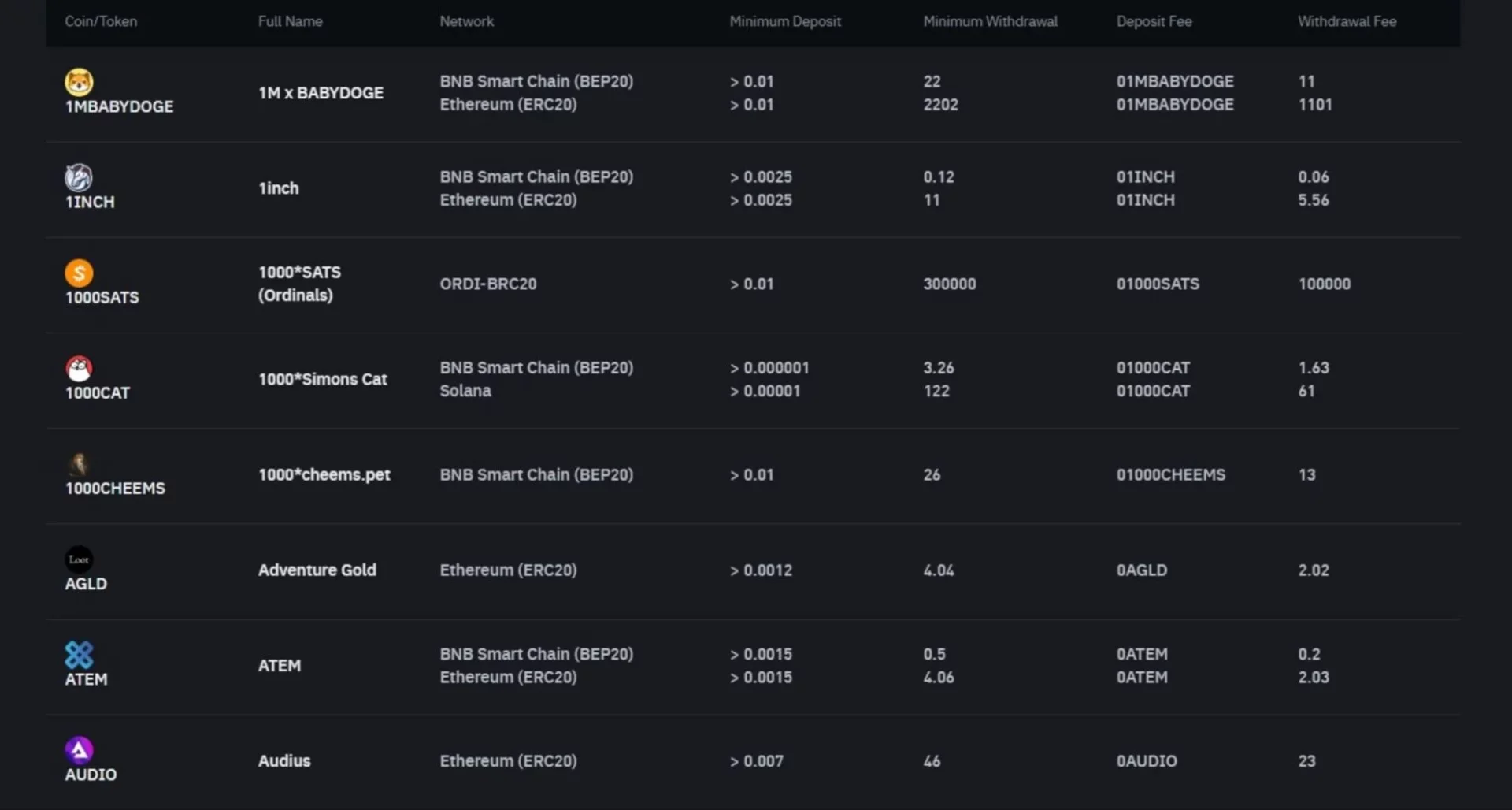
Fiat Withdrawals: Binance offers several options, with fees varying by payment method and currency, ranging from 0.1% to 1%. Please check the withdrawal page for the exact fees you are to pay.
Binance vs KuCoin: Staking Fees
Binance charges a service fee for staking, which varies by coin (ETH and SOL), but it is generally around 10% of the staking rewards as a commission for managing the staking process. This fee is deducted from the staking rewards that Binance traders earn.
Aside from SOL and ETH staking, Binance also offers Soft Staking, which allows traders to earn daily rewards by holding selected crypto assets in their spot account. Fortunately, you do not need to pay any additional fees for participating in Soft Staking.
Likewise, KuCoin also charges a service fee for staking, usually in the range of 10% to 20% of the staking rewards, depending on the coin. KuCoin staking options comprise soft staking and locked staking. Soft staking on KuCoin lets users earn rewards without locking their assets. In contrast, locked staking requires traders to commit funds for predetermined periods ranging from 3 to 90 days, with higher annual percentage yields (APYs) in return.
KuCoin vs Binance: Futures Fees
For futures contracts, KuCoin charges 0.02% for makers and 0.06% for takers. Similar to spot trading, fees decrease as users climb the VIP levels. At the top VIP tier, maker fees can go as low as -0.008% while taker fees can be reduced to 0.025%. Unlike Binance, KuCoin does not offer an additional discount for paying futures fees with its native token (KCS).
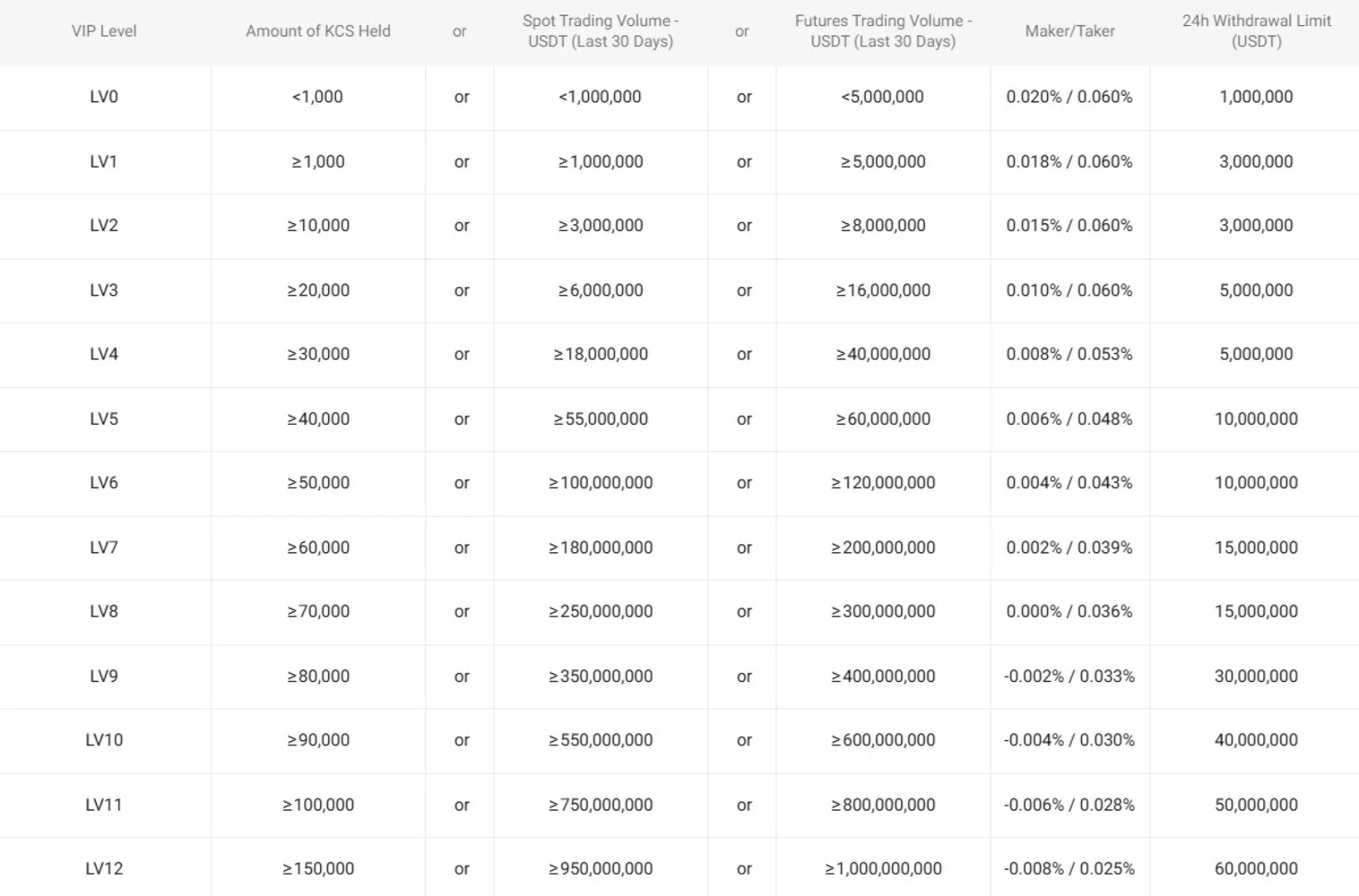
Meanwhile, for USD-M and COIN-M Futures contracts on Binance, regular users pay 0.02% for maker fees and 0.05% for taker fees. Traders with higher trading volume enjoy lower costs, with VIP 9 users paying 0% maker and 0.017% taker fees. Additionally, holding BNB can help you reduce Binance fees by 10%.
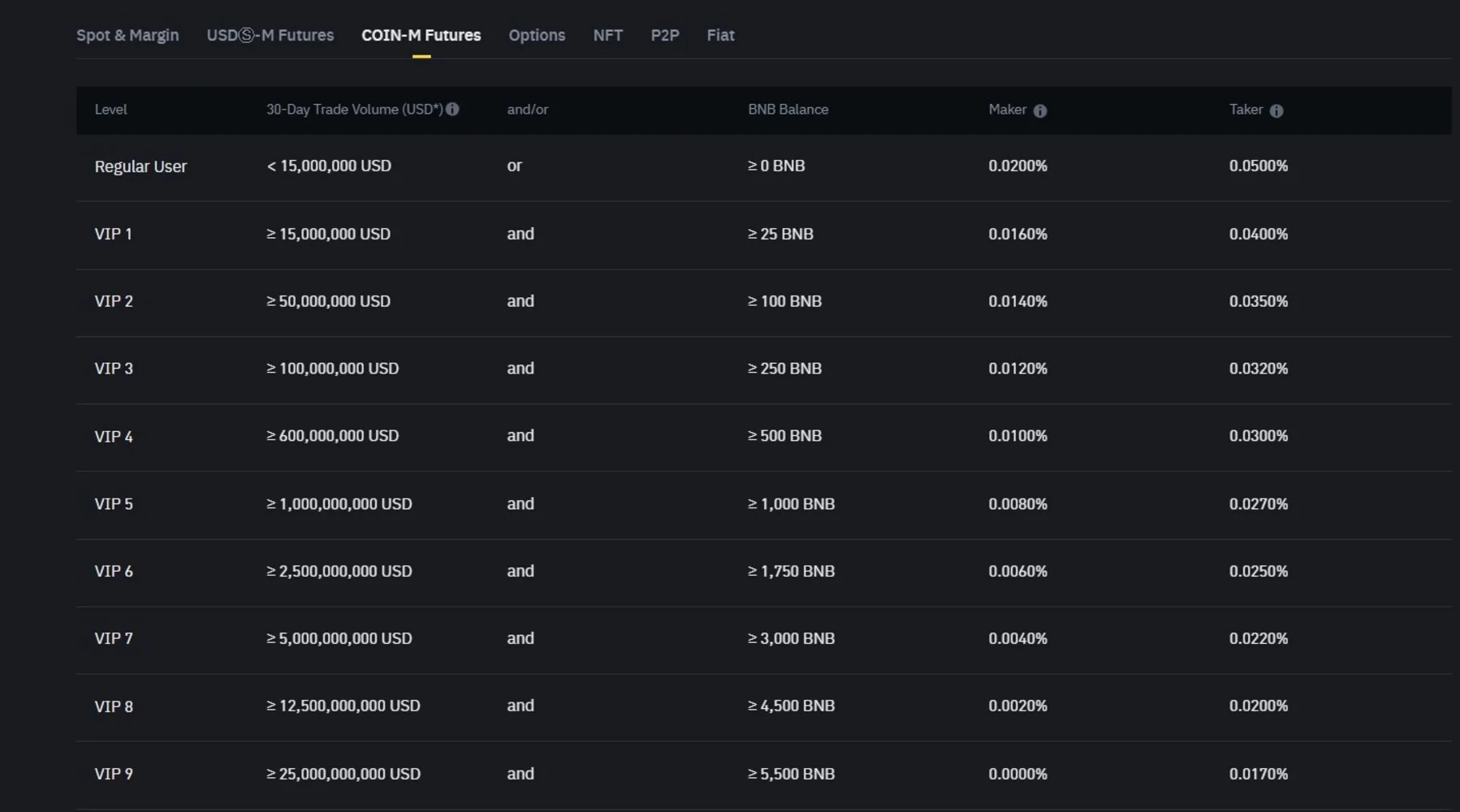
What Are The Best Features of Binance?
The best features of Binance include trading bots, Binance Web3 wallet, Earn, Binance NFT, and Binance Launchpad & Launchpool.
Binance Trading Bot
Binance has built-in bots that automate your trades based on preset strategies. Binance offers eight trading bots, including grid bots (purchase crypto at low prices and sell high) and DCA (dollar-cost averaging), which enable you to automatically place buy/sell orders for a better average price. It also supports third-party API integrations, making automation easier and more accessible for beginners and advanced traders.
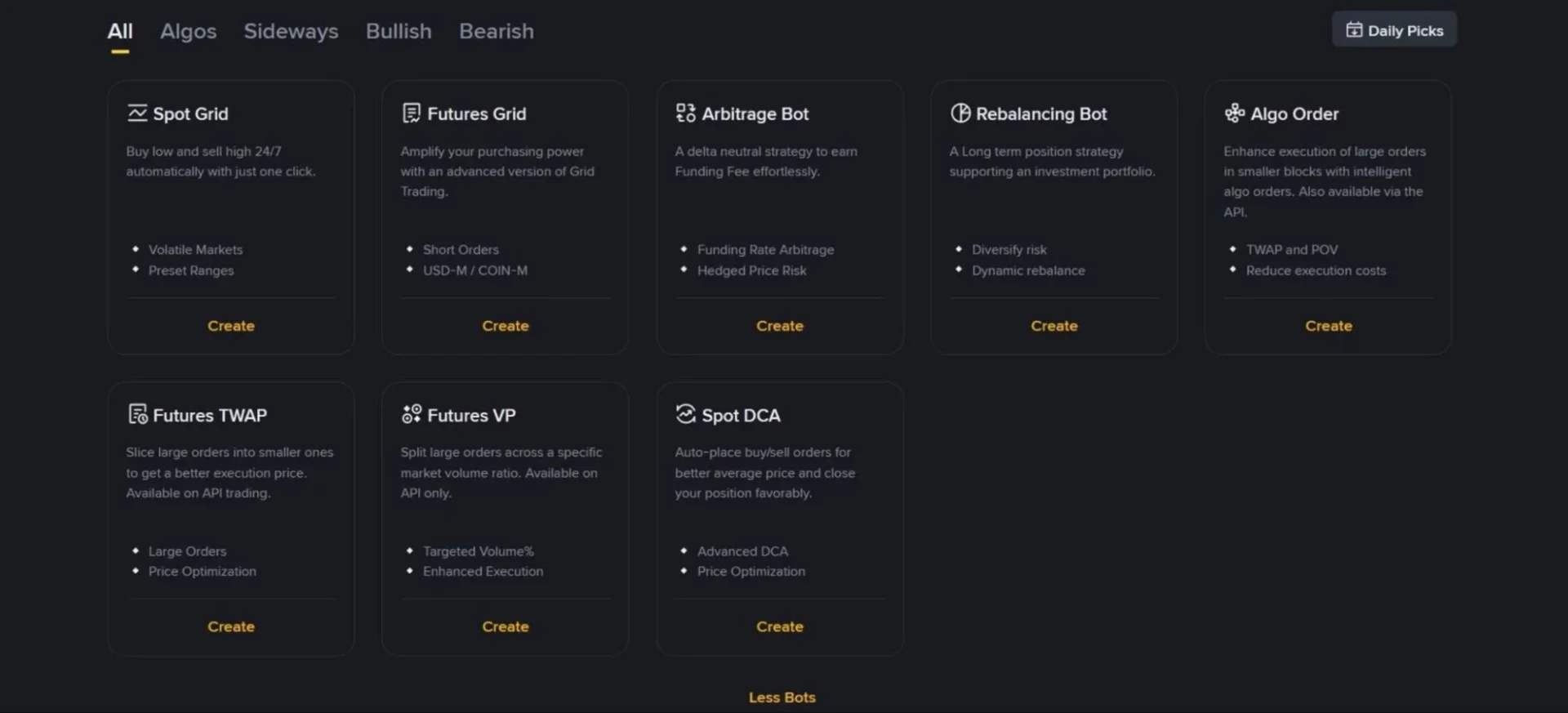
Binance Web3 Wallet
The Binance Web3 Wallet is a self-custody wallet that allows users to explore decentralized applications (dApps), manage on-chain assets, and access DeFi protocols securely. The platform integrates directly into Binance, allowing users to participate in exclusive airdrop campaigns, easily interact with DeFi protocols, and process token swaps across Ethereum, BNB Chain, and other networks.
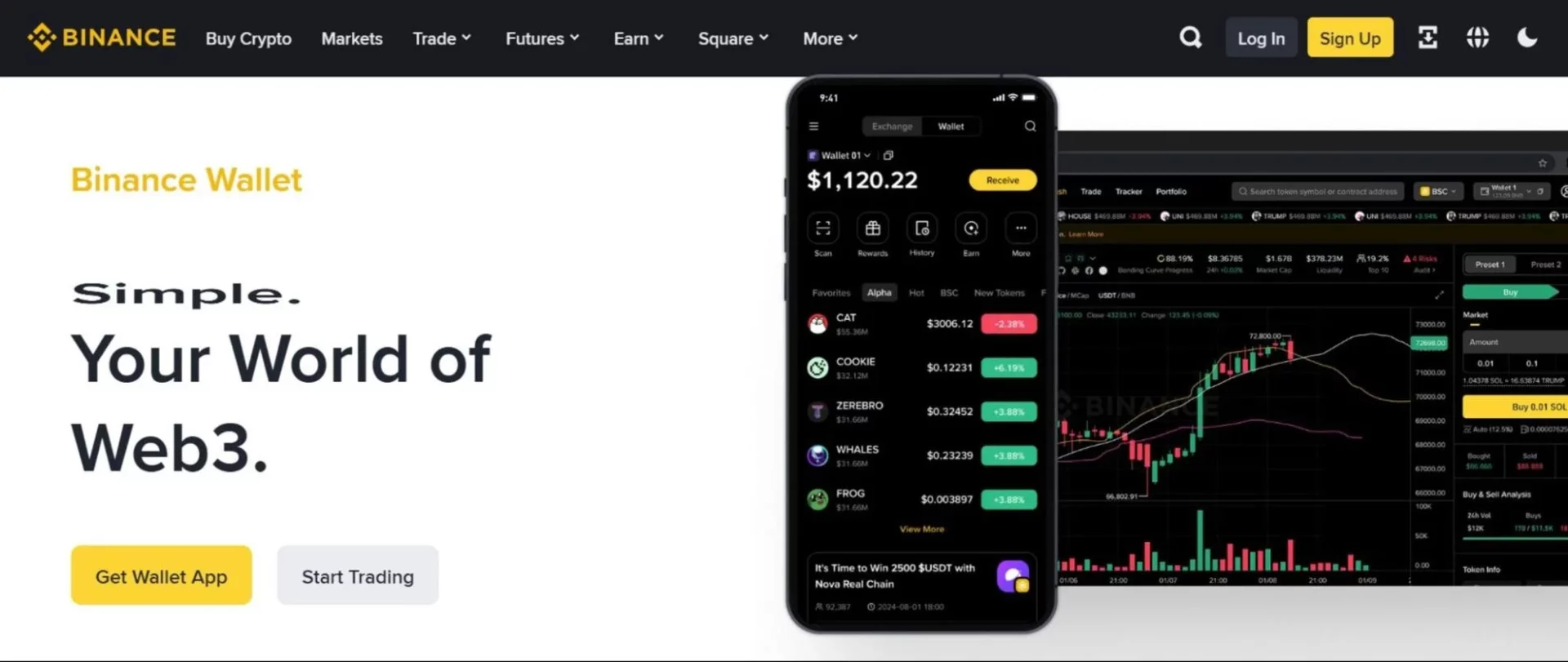
Binance Earn
Binance Earn is a comprehensive suite of financial products designed for traders who want to make passive income while trading. This service includes the following:
- Simple Earn: The easiest way to earn rewards by staking or depositing selected cryptocurrencies, including BNB, SOL, and DOT. You can choose between flexible or locked terms, which come with higher APRs.
- Advanced Earn: Offers more advanced earning products such as Dual Investment, Smart Arbitrage, and On-Chain Yields for users willing to take some market risk for better returns.
- ETH/SOL Staking: Stake ETH or SOL directly via Binance to earn interest and staking rewards supporting PoS networks, without running a validator node yourself.
Binance also offers earnings via spot and futures trading, referral commissions, airdrops, promotions, and an educational “Learn & Earn” program that rewards users with free crypto for completing courses.
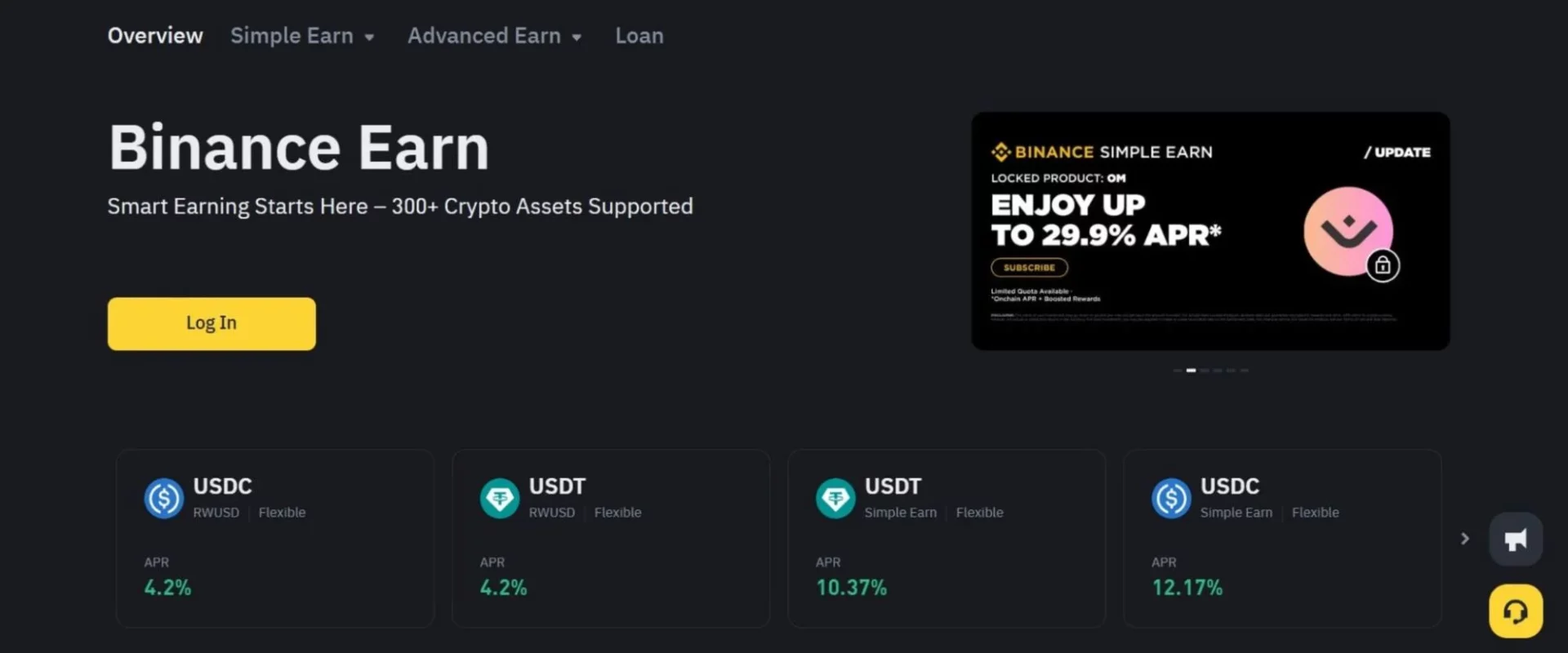
Binance NFT Marketplace
Binance NFT is the exchange’s dedicated platform for users to discover, buy, sell, and mint digital collectibles and NFTs. It supports a range of creators, games, and projects, all in one place. Similar to the web3 wallet, Binance NFT is integrated with the broader Binance ecosystem, giving users access to better liquidity, lower fees, and easier onboarding for both creators and buyers.
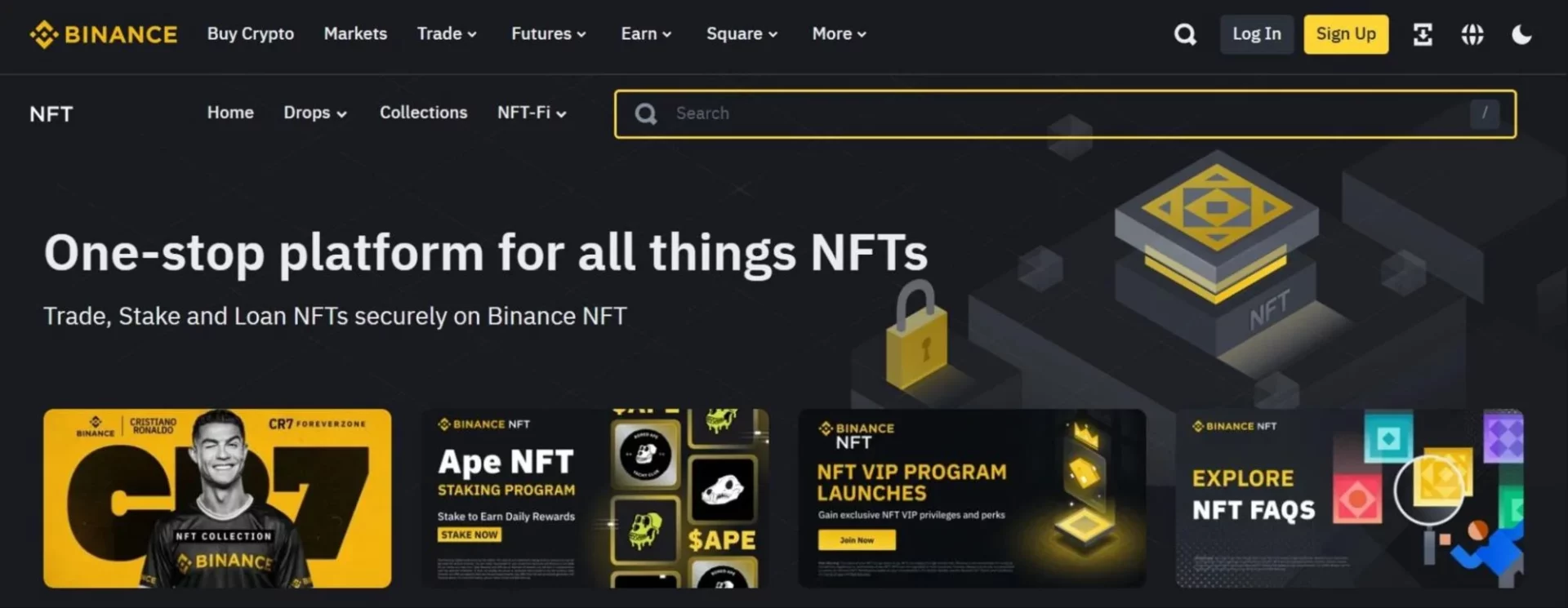
Binance Launchpad and Launchpool
Binance Launchpad gives investors early access to high-potential crypto projects through token sales, while Launchpool lets users earn newly launched tokens by staking or locking up cryptocurrency assets.
On Launchpad, users can participate in Initial Exchange Offerings (IEOs), buying tokens before they’re publicly traded. Binance carefully vets these projects for quality, innovation, and long-term potential, giving investors a chance to support promising startups while benefiting from early adoption.

What Are The Best Features of KuCoin?
The best features of KuCoin are trading bots, KuCoin web3 wallet, LaunchHub, KuCoin Earn, and KuCard.
KuCoin Trading Bots
KuCoin offers bots that help users execute trades, track market changes, and manage positions based on predefined parameters. The crypto exchange provides six bots to accommodate all traders. Some of the options include Spot Grid and Futures Grid for buying low and selling high in spot and futures markets, Spot Martingale for averaging down in bear markets, and Smart Rebalance for maintaining portfolio balance over time.
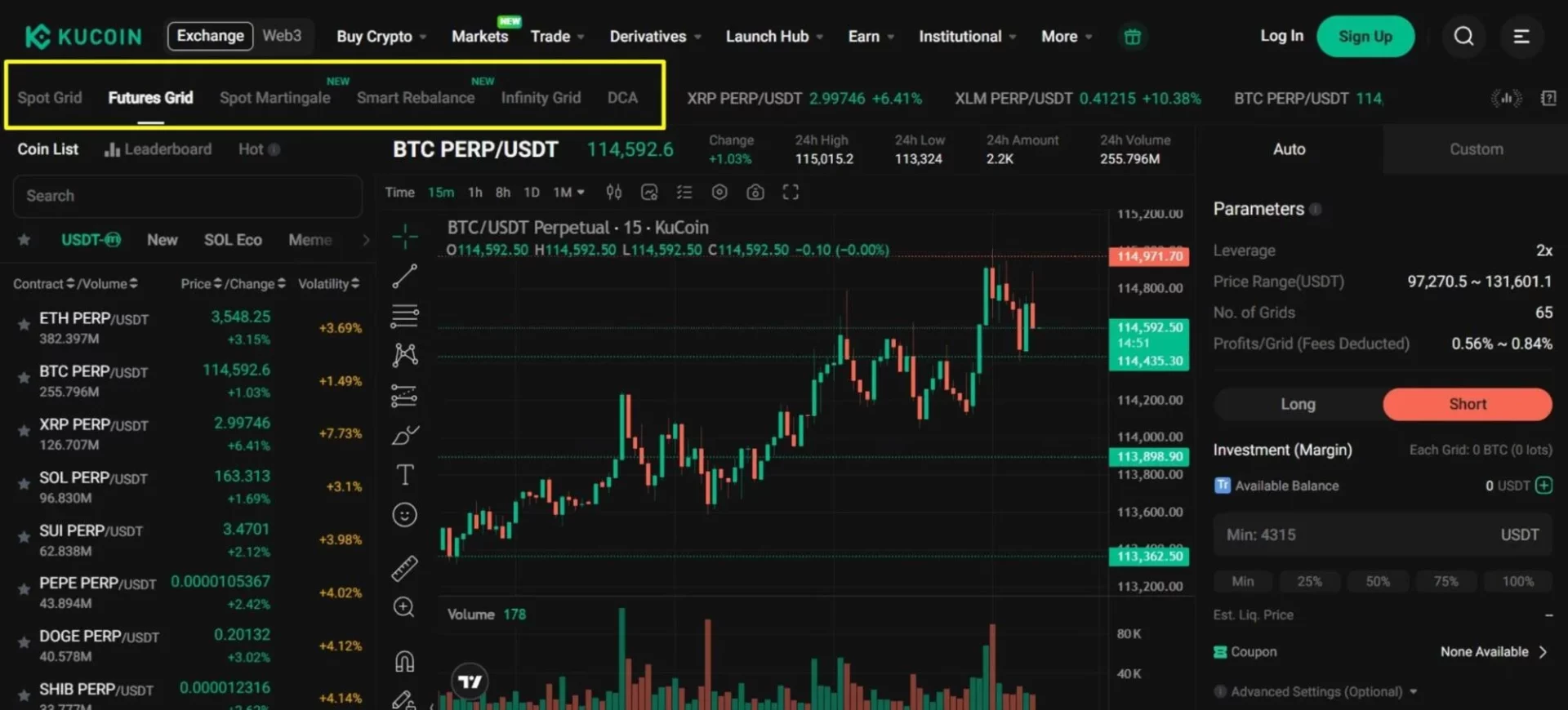
KuCoin Web3 Wallet
The KuCoin Web3 Wallet is a decentralized, non-custodial wallet that allows users to securely store, manage, and interact with a wide range of cryptocurrencies and NFTs. It features an integrated cross-chain swap aggregator DEX and Web3 Earn, a built-in DeFi investment tool. In addition, users can seamlessly connect to dApps, engage in DeFi activities such as staking and yield farming, and manage their NFTs and digital collectibles.
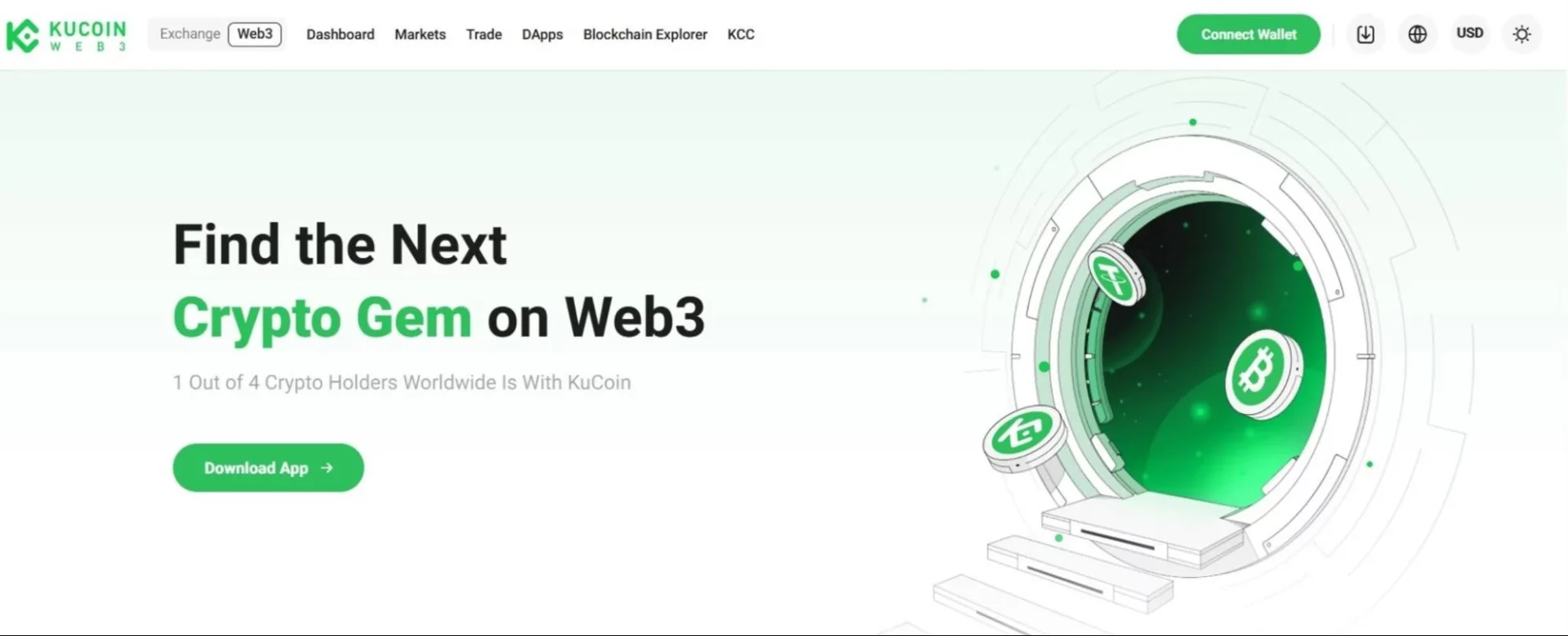
KuCoin LaunchHub
LaunchHub is KuCoin’s dedicated space for discovering new crypto projects. It features various products that provide information about upcoming token launches, help users participate in early-stage sales, and keep the community engaged with promising startups in the crypto space.
For instance, KuCoin Spotlight is where users participate in early token sales of vetted projects. GemSPACE is the project profile space, offering detailed information and milestones so users can follow the development journey. GemVote allows the community to vote on which new projects should be listed, while GemPool lets users stake assets to earn interest or tokens from up-and-coming projects.
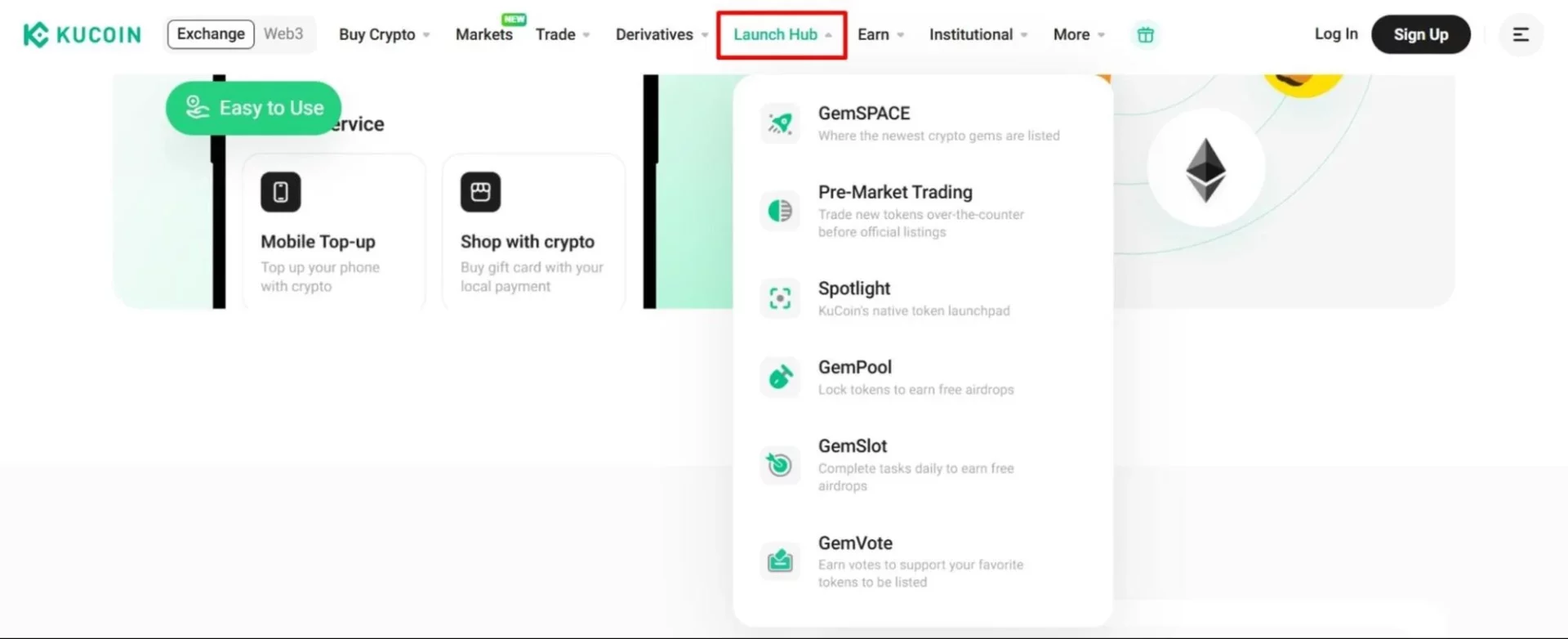
KuCoin Earn
KuCoin Earn offers traders multiple ways to earn passive income through professional asset management. Depending on their investment goals, users can choose from various financial products, including Simple Earn, Staking, Structured Products, and Specialized Products. Additionally, the exchange has a Learn & Earn program that allows traders to earn free crypto for learning about crypto.
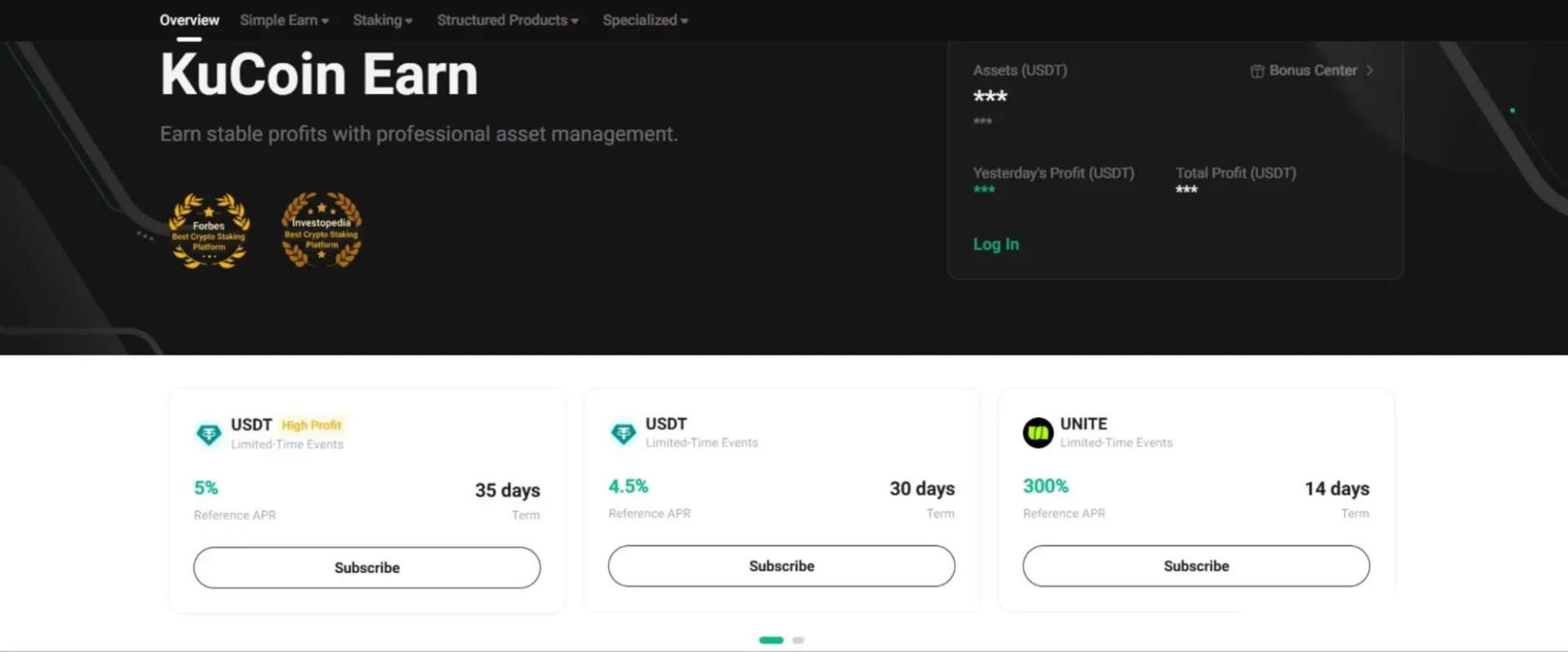
KuCard
The KuCard is a VISA debit card that allows users to spend their cryptocurrencies anywhere Visa cards are accepted. KuCoin converts crypto into fiat currency at the point of purchase, making it easy for traders to use their cards for online shopping, in-store purchases, and cash withdrawals at ATMs. However, KuCard is not available to all KuCoin users. Currently, it is only available to residents of the European Economic Area (EEA).
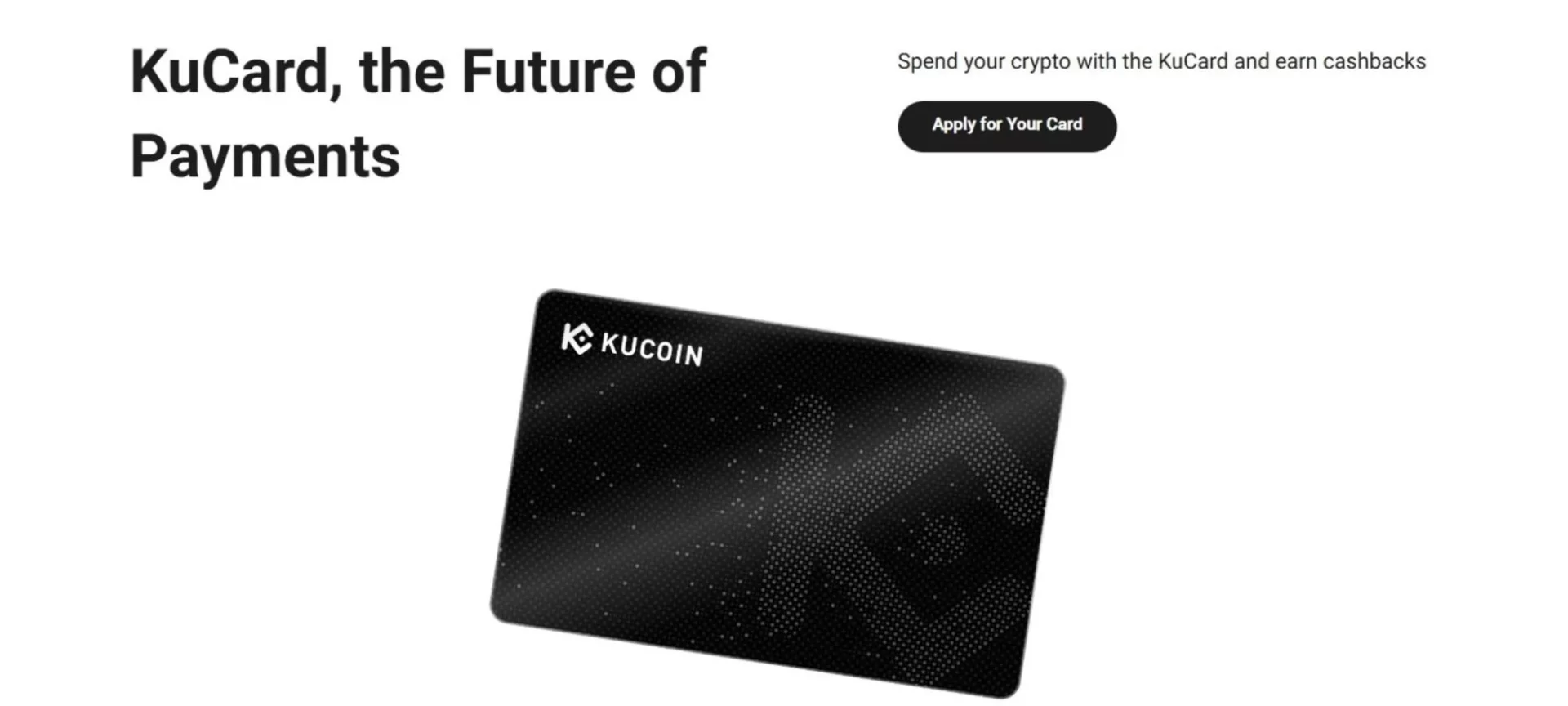
Register a new KuCoin account and receive a $100 welcome bonus and 10,800 USDT Bonus
How Many Cryptocurrencies Are Supported on Binance vs KuCoin?
Binance currently supports over 430 cryptocurrencies and 1,500 trading pairs. In Q1 2025, the exchange added 36 new tokens, including SAHARA, SPK, NEWT, HOME, and other AI-focused and zero-knowledge projects. Meanwhile, KuCoin supports 750+ cryptocurrencies for buying, selling, and trading, including major coins and many smaller altcoins.
What Are The Differences in Security Between Binance vs KuCoin?
The key differences in security between Binance and KuCoin are in their insurance funds and account management. Although they have similar security features, Binance has a more robust security infrastructure than KuCoin, even though KuCoin’s security is also strong.
Binance stores the majority of user assets in cold wallets offline and has a $1 billion Secure Asset Fund for Users (SAFU) designed to protect customer funds in case of a breach caused by a vulnerability on Binance’s end. In addition, the crypto exchange employs a multi-tier system architecture and AI-based suspicious activity detection.
On the other hand, KuCoin emphasizes anti-fraud design, including device security, privacy protection, anti-phishing measures, withdrawal anti-tampering, and wallet security, all of which are combined with high data and app security. KuCoin also has an insurance fund primarily focused on leveraged tokens and futures trading positions.
Binance vs KuCoin: Which Is Best for You?
The choice between Binance and KuCoin depends on your experience level, trading needs, and priorities as a crypto investor or trader. For instance, KuCoin is best for crypto traders who want to invest in lesser-known altcoins and want advanced trading features and automation options. Meanwhile, Binance has more liquidity, making it suitable for active and high-volume traders. Here’s a comparison to help you decide which may be best for you:
Start your trading journey on Binance today with $100 free trading credit and a 20% lifetime discount
What Are The Pros and Cons of Binance
The pros and cons of Binance are listed below:
Pros
- Low Trading Fees: Binance fees are low with up to 25% discount for high-volume traders and BNB holders. Find out how to get additional trading fee discounts on Binance in this Binance referral code article.
- Extensive Product Offering: On Binance, you can trade crypto derivatives, spot and margin pairs, and futures contracts. The cryptocurrency exchange also offers copy trading, staking, Binance lending, NFTs, and more, catering to both beginners and advanced users.
- High Liquidity and Volume: As the largest exchange by volume, Binance ensures fast order execution and minimal slippage.
- Advanced Security: Binance Exchange implements robust security measures to protect users’ funds, including two-factor authentication (2FA), SAFU insurance fund, cold storage, and proof-of-reserves.
- Educational Resources: The exchange offers comprehensive support for traders and crypto enthusiasts via Binance Academy, tutorials, and research tools for all user levels.
Cons
- Might be Overwhelming for Beginners: Binance offers multiple features, trading options, products, and services, which are great for professional traders. However, this extensive range of products and services may overwhelm beginners.
- Regulatory Challenges: Binance faces scrutiny and service restrictions in regions like the US, the UK, Canada, and others, affecting some features and asset availability.
Who Is Binance Best For?
Binance crypto exchange is best for:
- Frequent or High-volume Traders: Binance offers low trading fees, more advanced tools, and high liquidity, making it suitable for those who trade frequently or in large volumes. You can trade over 1,500 pairs across the spot, margin, and the Binance futures markets, and also deploy automated trading tools to help you manage your positions 24/7.
- Experienced Traders: Binance has extensive product offerings, including advanced charting tools (via TradingView) to various order types, staking, crypto lending, launchpads, and DeFi options. These features can be overwhelming for new traders, even though they are perfect for crypto users who already understand how trading platforms work.
- Passive Income Traders: If you want to earn passive income while trading, Binance has options like staking, crypto lending, and other programs designed to help investors earn rewards as they trade. This makes Binance great for people who want to make the most of their crypto even when they are not actively trading.
That said, Binance offers a wide range of features, which can be overwhelming for users looking for a simple trading experience. If you are unfamiliar with trading and want to use Binance, you can learn more about the cryptocurrency exchange in this Binance review and through Binance Academy.
What Are The Pros and Cons of KuCoin
The pros and cons of KuCoin are listed below:
Pros
- Extensive Coin Selection: KuCoin lists over 750 cryptocurrencies and more than 1,200 trading pairs, including many new and small-cap tokens not found on major exchanges.
- Low Fees: The standard KuCoin fees are 0.1% for spot trading, with discounts available for users holding KuCoin’s native token (KCS).
- Advanced Trading Features: KuCoin offers spot, margin, and derivatives trading (up to 100x leverage), as well as free built-in trading bots, copy trading, and a professional trading interface.
- Earning Opportunities: Offers a range of passive income options, including staking, lending, flexible savings, and innovative products like Dual Investment and Shark Fin.
Cons
- Not Available for US Traders: KuCoin is not available to US traders due to regulatory challenges.
- Limited Liquidity for Some Altcoins: Since KuCoin lists tons of lesser-known Altcoins, some tend to have lower volume/activity, which in turn equates to limited liquidity.
- No Direct Fiat Withdrawals: Users cannot directly withdraw to bank accounts, they must use peer-to-peer (P2P), third-party services, or transfer to another exchange for fiat conversion.
Who Is KuCoin Best For?
KuCoin is best for:
- Early Adopters: As discussed earlier, KuCoin is known for listing a wide range of emerging and lesser-known cryptocurrencies before they appear on bigger exchanges like Binance. This makes it a go-to platform for users looking to invest early in new projects.
- Lower Fees & KCS Perks: While both Binance and KuCoin have low fees, KuCoin gives fee discounts and daily profit-sharing to holders of its native KCS token, making active or high-frequency traders with KCS holdings more likely to benefit.
- Diverse Earning Products: KuCoin offers unique earning products like Shark Fin and Snowball in addition to standard staking and lending. This makes it suitable for users looking for advanced yield-generating instruments.
If you are considering opting for KuCoin, check out our comprehensive KuCoin exchange review to better understand the exchange, its features, and security measures. Once you’ve settled on trading with KuCoin, you can use the current KuCoin referral code to get a $100 welcome bonus and up to 10,500 USDT in futures trial funds.
The post Binance vs KuCoin: Which Crypto Exchange Is The Best in 2025? appeared first on CryptoNinjas.

You can get bonuses upto $100 FREE BONUS when you:
💰 Install these recommended apps:
💲 SocialGood - 100% Crypto Back on Everyday Shopping
💲 xPortal - The DeFi For The Next Billion
💲 CryptoTab Browser - Lightweight, fast, and ready to mine!
💰 Register on these recommended exchanges:
🟡 Binance🟡 Bitfinex🟡 Bitmart🟡 Bittrex🟡 Bitget
🟡 CoinEx🟡 Crypto.com🟡 Gate.io🟡 Huobi🟡 Kucoin.
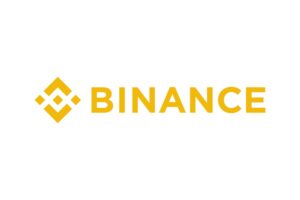

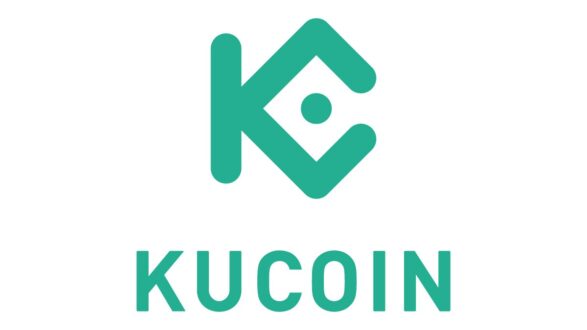



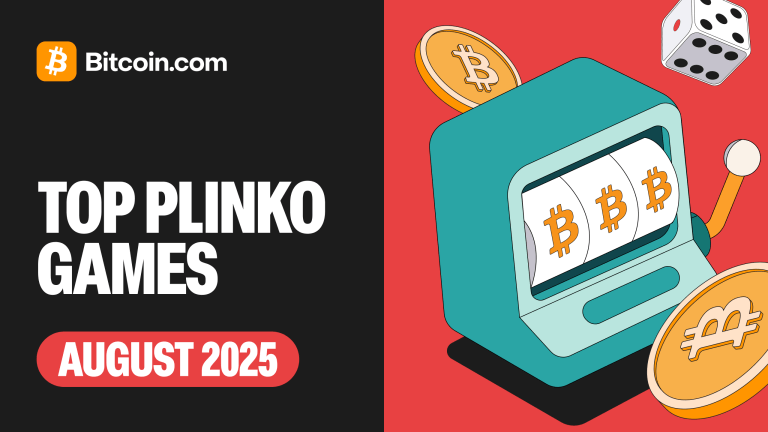
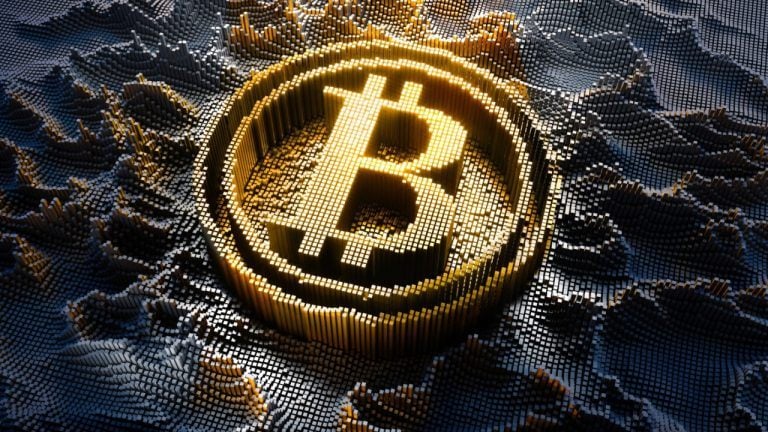

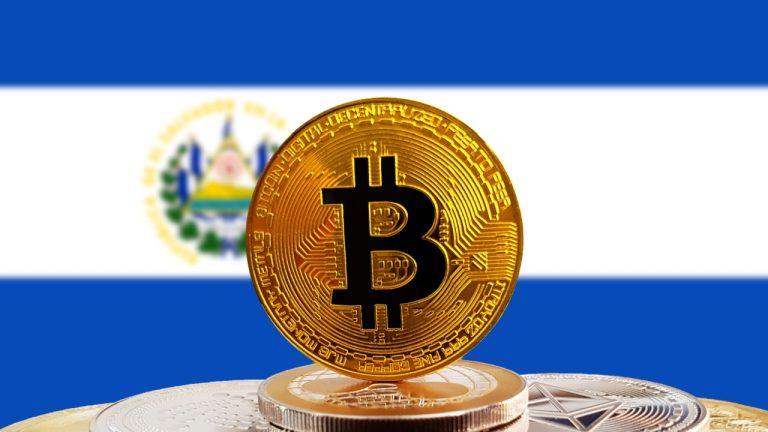
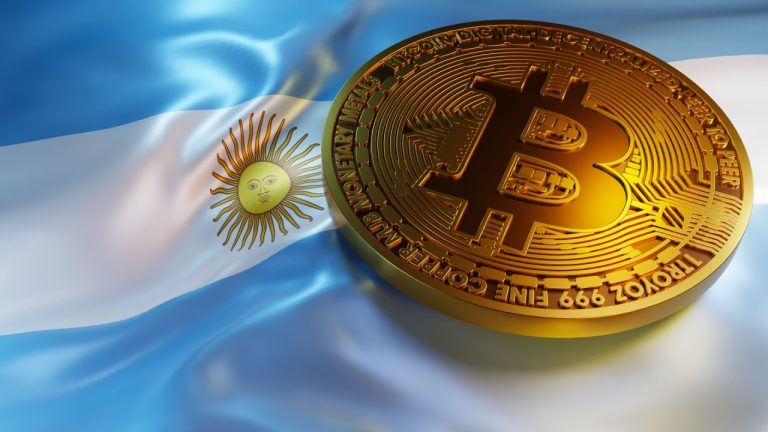
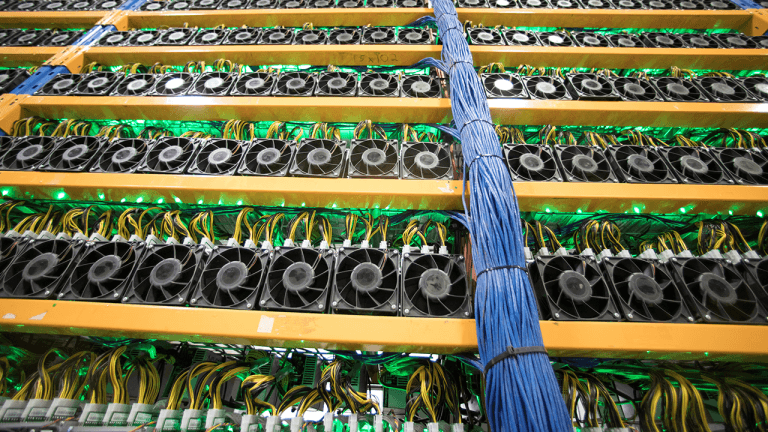
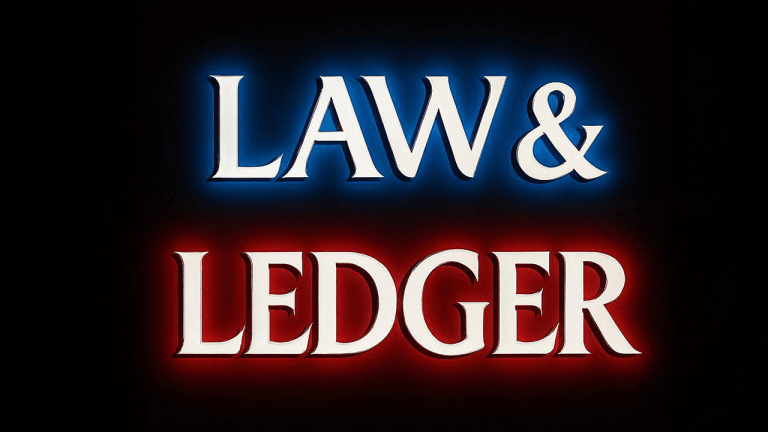
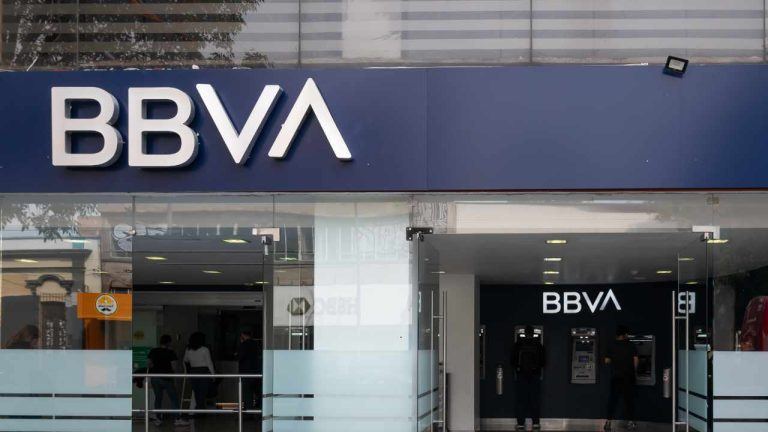
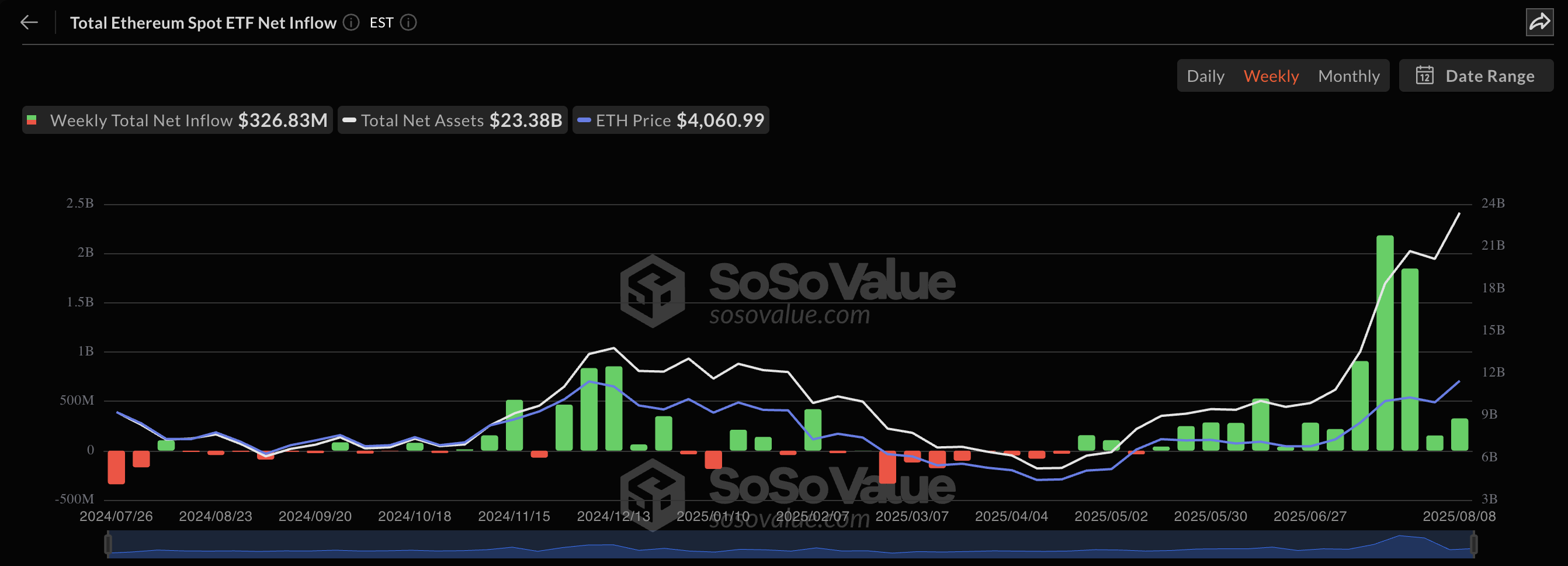

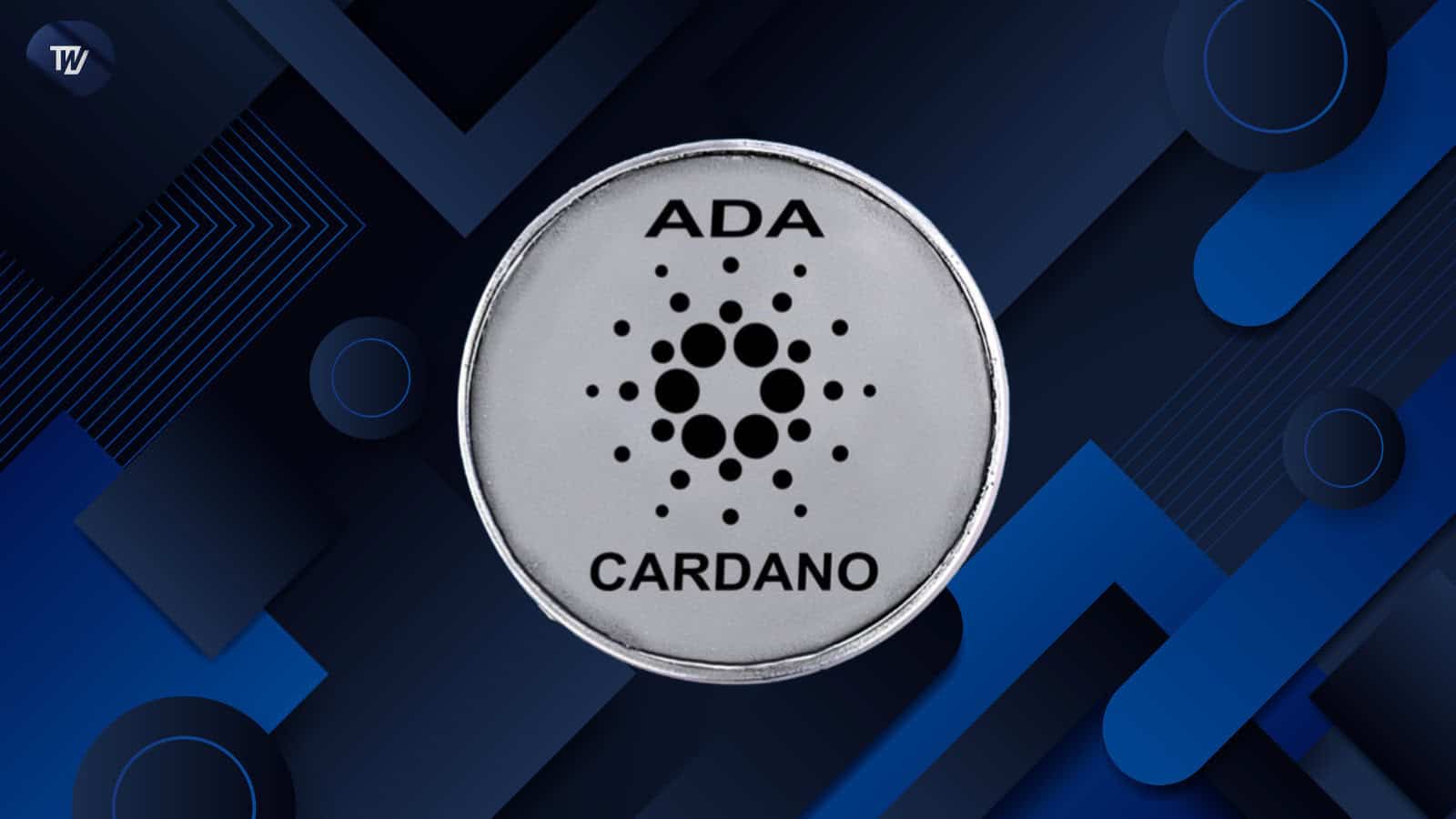
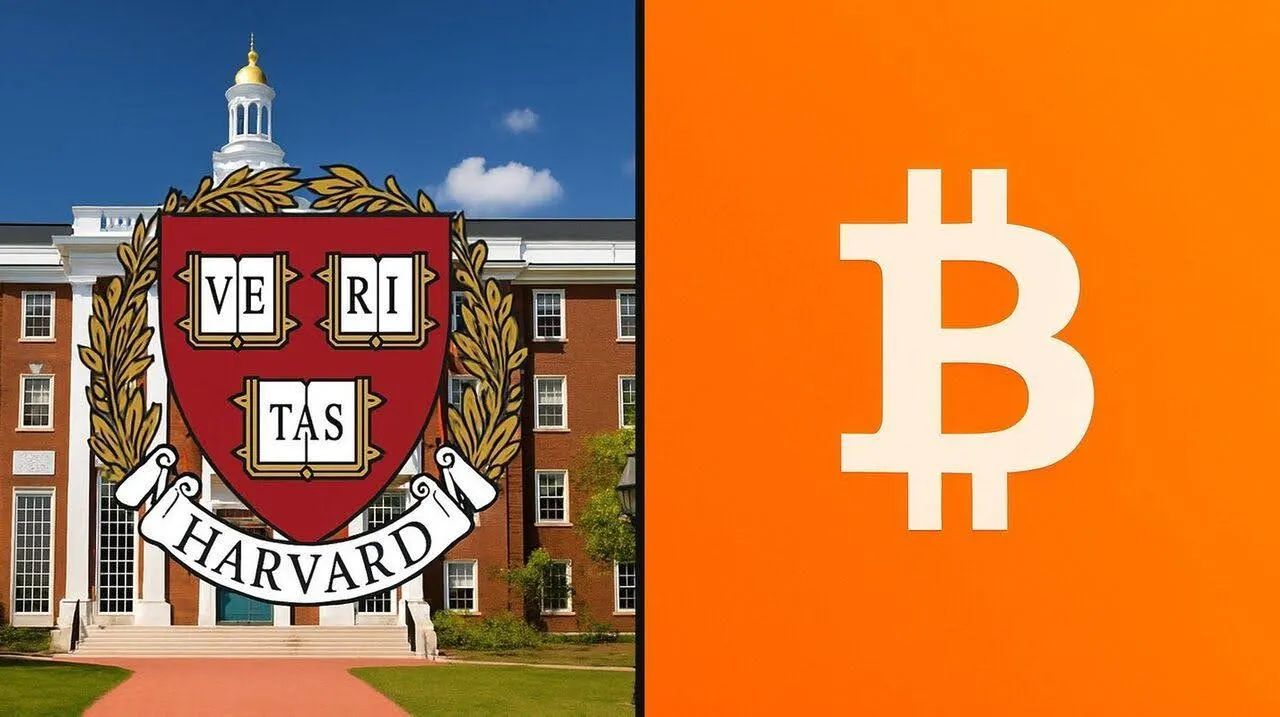

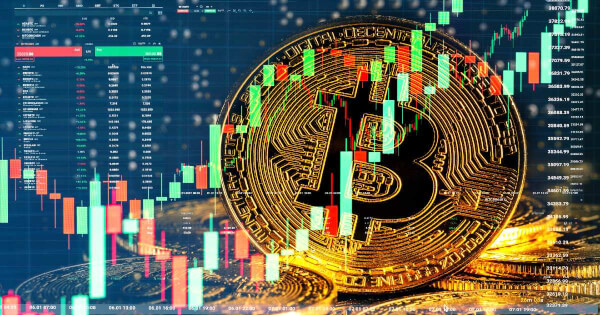

Comments